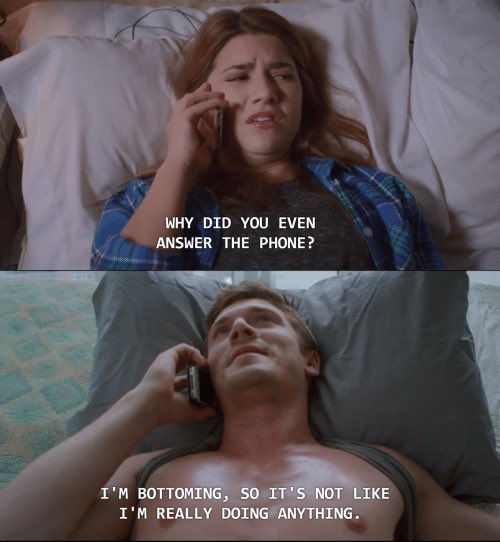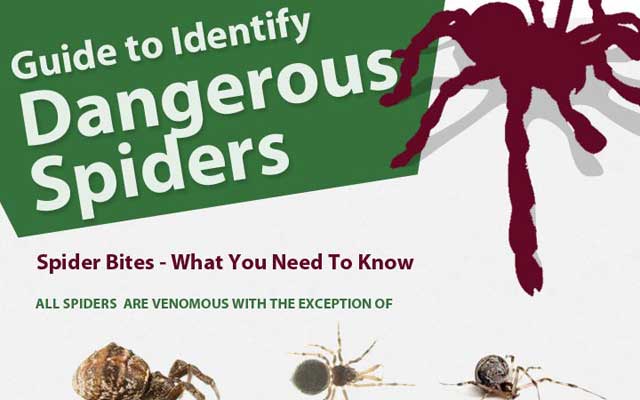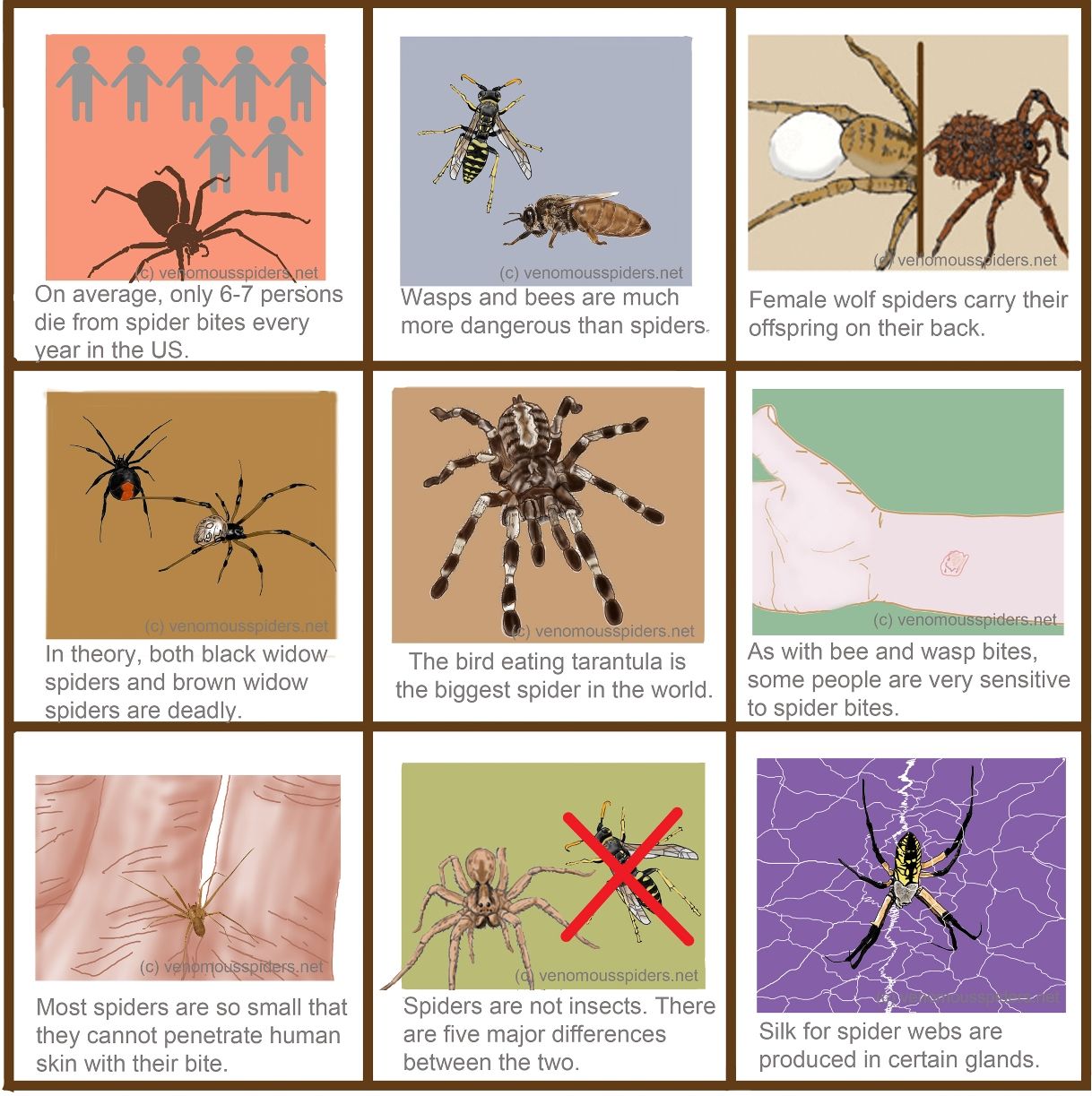What happens if a spider bites you. Spider Bites: Identification, Symptoms, and Treatment Guide
What are the signs of a spider bite. How to identify different spider species. When should you seek medical attention for a spider bite. What are the treatment options for various spider bites.
Common Spider Bite Symptoms and Identification
Spider bites can be tricky to identify, especially if you didn’t see the culprit. However, there are some telltale signs that can help you determine if a spider is responsible for your bite. Most spider bites leave two small puncture marks on the skin, often accompanied by redness and swelling. While many spider bites are harmless, some can produce severe symptoms that require medical attention.
Key symptoms to look out for include:
- Swelling around the bite area
- A red welt or raised bump
- Visible skin damage
- Itching or rash
- Pain or burning sensation
- Muscle cramps or spasms
- Blistering (red or purple in color)
- Sweating
- Difficulty breathing
- Headache
- Nausea and vomiting
- Fever and chills
- Anxiety or restlessness
- Swollen lymph nodes
- Elevated blood pressure
Is every spider bite dangerous? Fortunately, no. Out of over 3,500 spider species found in the United States, only a handful pose significant health risks to humans. Most spiders either have fangs too small to penetrate human skin or venom that’s not potent enough to cause harm. However, bites from certain species can lead to serious complications if left untreated.

Dangerous Spider Species: Know Your Risks
While most spider bites are harmless, there are a few species that can cause severe reactions. In the United States, two types of spiders are of particular medical concern: widow spiders and recluse spiders. Let’s take a closer look at these potentially dangerous arachnids and others that may pose a threat.
Brown Recluse Spider
The brown recluse spider, also known as the violin spider due to its distinctive marking, is found primarily in the central and southern United States. These spiders are not typically aggressive but may bite if trapped against the skin.
How can you identify a brown recluse bite? Initially, the bite may be painless, but within 2-8 hours, you might experience:
- Itching and pain
- Redness around the bite area
- A ring resembling a target or bull’s-eye
- Blistering
- Fever, chills, and headache
In severe cases, a brown recluse bite can lead to tissue death (necrosis) and require medical intervention. While rare, complications can include coma, seizures, jaundice, and kidney failure.

Black Widow Spider
The black widow spider is notorious for its potent venom. Found mostly in warm southern and western states, these spiders are easily recognizable by their shiny black bodies and distinctive red hourglass marking on their abdomens.
What happens if a black widow spider bites you? The initial bite may feel like a small pinprick or go unnoticed. However, symptoms can develop rapidly and may include:
- Muscle cramps and pain
- Burning sensation at the bite site
- Headache
- Elevated blood pressure
- Increased salivation and sweating
- Nausea and vomiting
- Numbness
- Restlessness
Black widow bites can be particularly dangerous for children and older adults, making prompt medical attention crucial.
Other Potentially Dangerous Spiders
While less common or less severe, bites from the following spiders may also require medical attention:
- Hobo Spider: Found in the Pacific Northwest, hobo spider bites can cause headaches, vision problems, and in some cases, necrotic lesions.
- Tarantula: While their bites are typically not dangerous, tarantulas can cause painful bites and may flick irritating hairs that can cause skin and eye irritation.
- Brazilian Wandering Spider: Although rare in the United States, this spider is considered one of the most venomous in the world. Its bite can cause severe pain, sweating, and in extreme cases, priapism (prolonged, painful erections).
Spider Bite Treatment: Home Remedies and When to Seek Help
Many spider bites can be treated at home, but it’s important to know when professional medical care is necessary. For non-venomous spider bites, follow these steps:

- Clean the bite area thoroughly with soap and water to prevent infection.
- Apply an ice pack wrapped in cloth to the bite site for 10 minutes at a time to reduce swelling.
- Elevate the affected area to minimize swelling.
- Take an over-the-counter antihistamine like diphenhydramine (Benadryl) to alleviate itching.
- If blisters develop, apply an antibiotic ointment to the area.
When should you seek medical attention for a spider bite? It’s crucial to consult a healthcare professional if:
- You suspect the bite is from a dangerous spider species (brown recluse, black widow, etc.)
- Symptoms worsen or don’t improve over time
- You develop severe pain, muscle cramps, or difficulty breathing
- The bite area shows signs of infection or tissue death
- You experience systemic symptoms like fever, chills, or nausea
Prevention: Keeping Spiders at Bay
While not all spider encounters can be avoided, there are steps you can take to reduce your risk of spider bites:
- Seal cracks and crevices in your home’s exterior to prevent spiders from entering.
- Keep your living spaces clean and clutter-free, reducing hiding spots for spiders.
- Wear protective clothing when working in areas where spiders are likely to hide, such as woodpiles or storage areas.
- Shake out shoes and clothing that have been left unused for extended periods.
- Use caution when reaching into dark spaces or moving items that have been undisturbed for a while.
- Consider using natural spider repellents like peppermint oil or vinegar around your home.
Understanding Spider Behavior and Habitats
To better protect yourself from potentially dangerous spider bites, it’s helpful to understand where these arachnids are most likely to be found and what triggers them to bite.
:max_bytes(150000):strip_icc()/spiderbitefinal-5a2ff7229e94270037bb4efa.png)
Brown Recluse Habitats
Where are you most likely to encounter a brown recluse spider? These reclusive creatures prefer dark, undisturbed areas such as:
- Closets and attics
- Basements
- Woodpiles
- Shoes or boots left unused
- Cardboard boxes
- Under rocks or logs
Brown recluse spiders are not aggressive and typically only bite when pressed against the skin, such as when putting on clothing where the spider has taken refuge.
Black Widow Habitats
Black widow spiders tend to prefer the following locations:
- Dark, dry areas like garages and sheds
- Woodpiles
- Under eaves of houses
- Outdoor toilets
- Meter boxes
- Rubble piles
Like brown recluses, black widows are not aggressive and usually only bite when disturbed or threatened.
Debunking Spider Bite Myths
There are many misconceptions surrounding spider bites. Let’s address some common myths:
Myth: All spiders are dangerous
Reality: The vast majority of spiders are harmless to humans. Out of thousands of spider species, only a handful pose significant health risks.
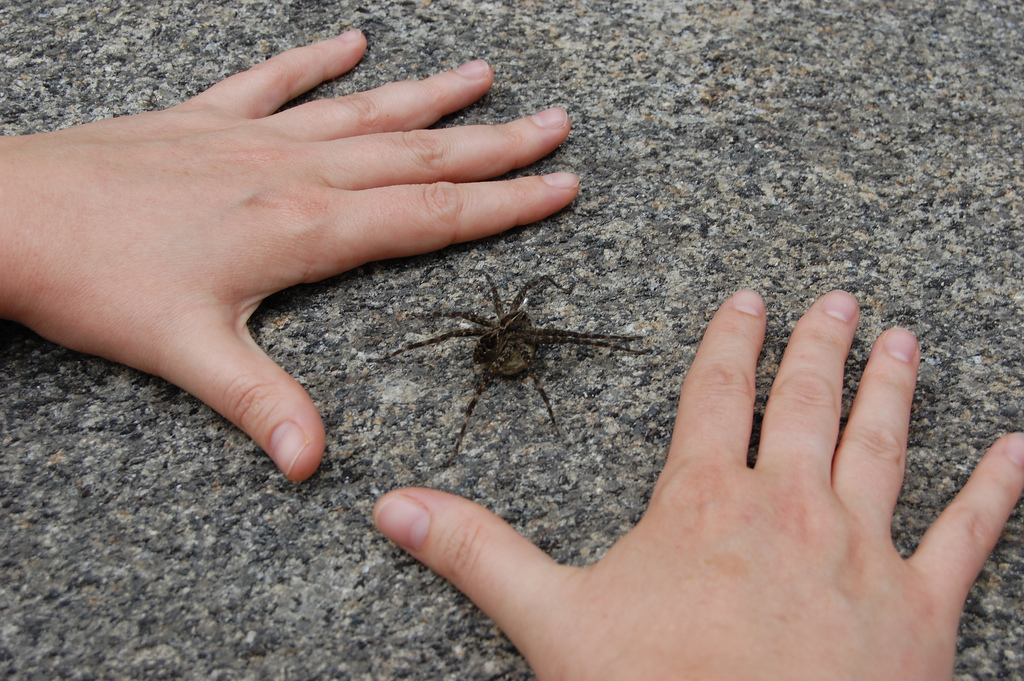
Myth: You can always tell a spider bite by two puncture marks
Reality: While many spider bites do leave two small puncture marks, this isn’t always the case. Some spiders may only leave one mark, and other insects can leave similar marks.
Myth: Spider bites always cause immediate pain
Reality: Many spider bites, even from dangerous species like the brown recluse, may be painless initially. Symptoms often develop hours after the bite occurs.
Myth: All spider bites require medical attention
Reality: Most spider bites can be treated at home with simple first aid. Medical attention is only necessary for bites from dangerous species or if severe symptoms develop.
The Role of Antivenom in Spider Bite Treatment
In cases of severe spider bites, particularly those from black widow spiders, antivenom may be used as part of the treatment. But what exactly is antivenom, and how does it work?
What is Antivenom?
Antivenom is a biological product used to treat venomous bites and stings. It’s created by milking venom from the specific spider species and injecting small amounts into animals (typically horses) to produce antibodies. These antibodies are then harvested and purified to create the antivenom.

How is Antivenom Used?
In the case of severe black widow spider bites, antivenom may be administered intravenously. It works by binding to the venom molecules, neutralizing their effects and preventing further damage. However, antivenom is not without risks and is typically reserved for severe cases where the benefits outweigh the potential side effects.
Is Antivenom Always Necessary?
No, antivenom is not required for all spider bites, not even all black widow bites. The decision to use antivenom depends on various factors, including the severity of symptoms, the patient’s overall health, and the potential risks of the treatment.
Long-Term Effects of Spider Bites
While most spider bites heal without complications, some can have lasting effects. Understanding these potential long-term consequences can help in recognizing when additional medical care may be necessary.
Necrotic Arachnidism
One of the most serious long-term effects of certain spider bites, particularly from brown recluse spiders, is necrotic arachnidism. This condition involves the death of skin and underlying tissues around the bite area. In severe cases, it can lead to:

- Large, slow-healing wounds
- Scarring
- Need for skin grafts or reconstructive surgery
- Potential for secondary infections
Systemic Effects
In rare cases, spider bites can lead to systemic effects that persist beyond the initial bite. These may include:
- Chronic pain
- Muscle weakness
- Neurological symptoms
- Kidney problems (in extreme cases)
It’s important to note that these long-term effects are rare and typically associated with bites from the most dangerous spider species. Most spider bites heal completely within a few days to weeks without any lasting impact.
Spider Bites in Children: Special Considerations
Children can be particularly vulnerable to spider bites due to their smaller size and tendency to explore. When it comes to spider bites in children, there are several important factors to consider:
Increased Risk of Severe Reactions
Children may be more susceptible to severe reactions from venomous spider bites due to their smaller body mass. A dose of venom that might cause mild symptoms in an adult could potentially lead to more serious effects in a child.
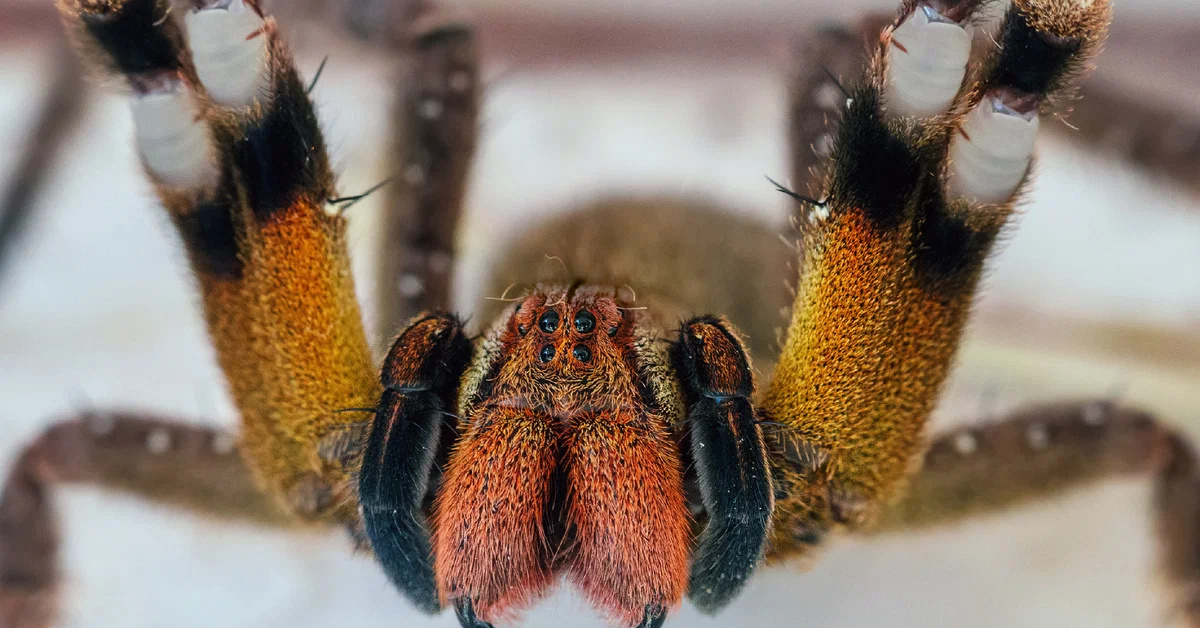
Difficulty in Diagnosis
Young children may have trouble communicating their symptoms or identifying when they were bitten, making diagnosis challenging. Parents should be vigilant for unexplained marks, swelling, or changes in behavior that could indicate a spider bite.
Treatment Considerations
When treating spider bites in children:
- Use age-appropriate doses of any over-the-counter medications
- Be cautious with antihistamines, as they can cause drowsiness
- Seek medical attention promptly if there’s any suspicion of a bite from a dangerous spider species
- Monitor the bite site closely for signs of infection or worsening symptoms
Prevention Strategies
To protect children from spider bites:
- Teach them to respect spiders and not to touch or provoke them
- Regularly inspect play areas, both indoors and outdoors, for spider activity
- Encourage children to shake out shoes and clothing before wearing, especially if stored in garages or basements
- Ensure children wear appropriate clothing and footwear when playing in areas where spiders may be present
By understanding the unique considerations for spider bites in children, parents and caregivers can better protect their little ones and respond effectively if a bite does occur.
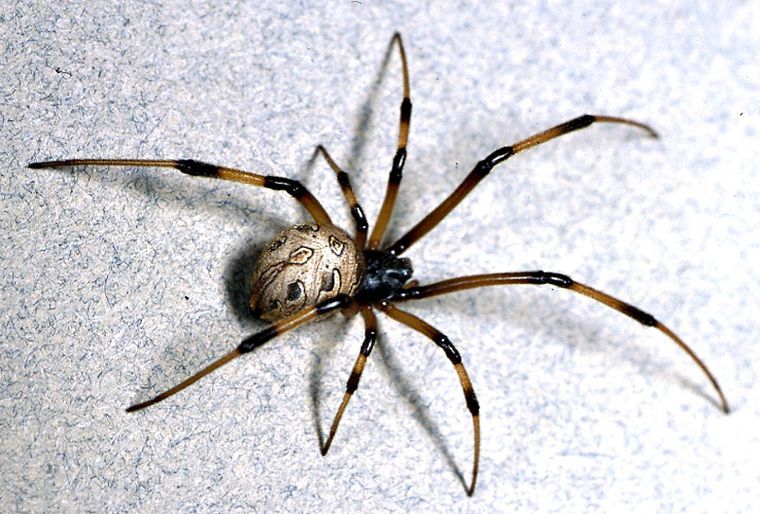
Identify What Bit You and Get Proper Help
When a spider bites, it may leave two marks on the skin. Some spider bites can produce severe symptoms, but very few are life threatening, and most spiders cannot bite humans.
In this article, find out how to recognize the symptoms of different spider bites and learn about some spiders that can bite humans.
There are over 3,500 spiders in the United States, but most are not dangerous. Only two species raise significant medical concerns: the widow and the recluse.
Most spiders bite, but their fangs are too small or weak to puncture human skin. Many spiders have weak or prey-specific toxins that are unlikely to affect humans. If they do bite, they may leave itchy, red wounds that heal within a week or so.
However, some spiders can bite through human skin and insert powerful toxins. Bites by these spiders are rarely fatal but can cause health complications, such as tissue death and painful muscle spasms.
Read on to learn:
- what spider bites look like
- what spider varieties leave certain bites
- how to treat spider bites
Identifying a spider bite is easier if you saw the spider that bit you, but you may not notice the wound until hours later.
Look for things like:
- swelling
- a red welt
- skin damage
- any troubling symptoms that accompany the bite
Other possible symptoms that may accompany a spider bite include:
- itching or rash
- pain around the area of the bite
- muscle pain or cramping
- a red or purplish blister
- sweating
- difficulty breathing
- headache
- nausea and vomiting
- fever
- chills
- anxiety or restlessness
- rashes
- swollen lymph glands
- high blood pressure
Spider bites can take longer to heal than other insect bites and may affect skin tissues. Keeping the bite clean can reduce the risk of infection.
In some cases, you can treat spider bites at home. For nonvenomous spider bites, follow these steps:
- Apply an ice pack on and off the bite for 10 minutes at a time. Always wrap ice or an ice pack in a cloth.
- Elevate the area to reduce swelling.

- Take an antihistamine, such as diphenhydramine (Benadryl), to help with itching.
- Clean the area with soap and water to prevent infection.
- Apply antibiotic ointment to the area if blisters develop.
Seek medical attention if you’re showing symptoms of a spider bite or if the symptoms don’t go away over time.
Always seek medical attention if you suspect one of the following species has bitten you:
- brown recluse
- black widow
- hobo spider
- tarantula
- Brazilian wandering spider
Learn where these spiders hide and what they look like below.
Share on Pinterest
The brown recluse belongs to the Loxosceles or recluse family of spiders. Brown spiders, like the brown recluse, have a body around one-third of an inch long.
Brown recluse spiders are not usually aggressive but will bite if trapped against a person’s skin. They typically hide in dark, secluded spaces. It’s also called the violin spider because of the dark marking on its back.
The brown recluse is usually found in areas such as:
- Missouri
- Tennessee
- Kansas
- Arkansas
- Louisiana
- Oklahoma
- Eastern Texas
The initial brown recluse bite may be painless, but within 2–8 hours, it’ll begin to itch, hurt, and turn red. A red or purple ring resembling a target or bull’s-eye will develop around the bite.
The bite can blister and grow progressively worse without treatment to the point where it may kill surrounding tissue and cause fever, chills, and headache.
On rare occasions, it can cause:
- coma or seizures
- jaundice
- blood in urine
- kidney failure
There’s no antidote for a brown recluse bite, but keeping the area clean can encourage faster healing.
Your doctor will examine the bite and prescribe antibiotics. People who experience tissue death may need surgery and time in the hospital.
How do you treat a brown recluse spider bite?
Share on PinterestImage credit: spotwin/Istock
The black widow spider is of the Latrodectus (widow) family of spiders. It is shiny and black with a distinct, reddish, hourglass-shaped mark on its belly. The body is around half an inch long.
It is shiny and black with a distinct, reddish, hourglass-shaped mark on its belly. The body is around half an inch long.
Found mostly in the warm Southern and Western United States, the black widow stays in secluded spaces such as:
- piles of fallen leaves
- woodpiles
- boxes in the attic
Only the female black widow is toxic. Black widow bites can feel like a small pinprick or nothing at all, but your skin’s reaction will be immediate. You’ll be able to see the two puncture marks on your skin.
Within an hour, you may start to notice:
- muscle cramping
- pain and burning at the puncture site
- headache
- high blood pressure
- increased saliva and sweating
- nausea and vomiting
- numbness
- restlessness
Prompt treatment is essential, especially in children and older adults. A doctor may prescribe an antivenom.
What happens if a black widow spider bites you?
Share on Pinterest
Hobo spiders are common in the Pacific Northwest.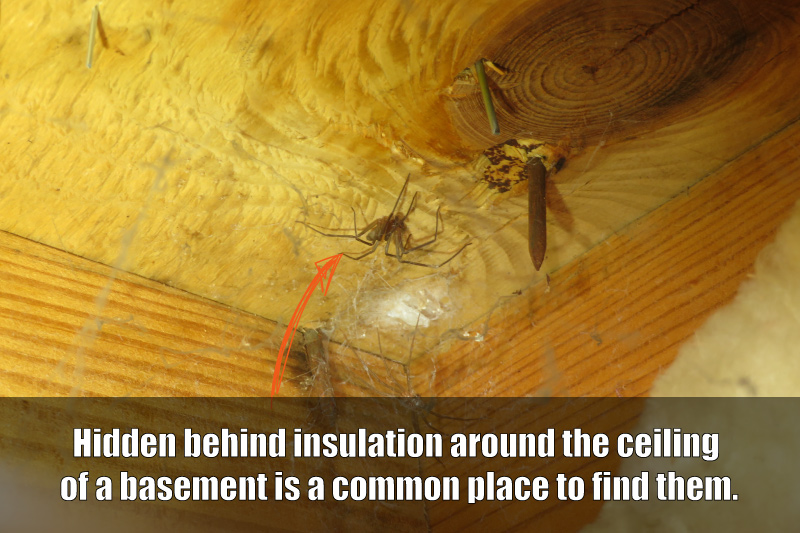 Their body measures around half to three-quarters of an inch long. They sit up high on long legs and run fast.
Their body measures around half to three-quarters of an inch long. They sit up high on long legs and run fast.
Hobo spiders can bite when provoked.
Take care when cleaning:
- behind furniture
- under baseboards
- in closets
You may not notice a bite from a hobo spider at first, but it’ll cause pain and numbness within 15 minutes.
After 1 hour, the site will start to turn red. In 8 hours, it’ll become hardened and swollen. After 24 to 26 hours, the wound may discharge fluids and eventually turn black.
Other signs and symptoms may include:
- a red or purple blister at the puncture site
- visual or aural disruption
- weakness
- joint pain
- headaches
- nausea
- sweating
Hobo spider bites are slow to heal. Seek immediate medical treatment if you suspect a hobo spider has bitten you.
The treatment is similar to that of brown recluse spider bites. It may involve:
- corticosteroids
- antibiotics
- surgery
Treatment works best if administered within 24 hours of the bite.
What else should you know about a hobo spider bite?
Share on Pinterest
Tarantulas occur in southwestern states with desert climates and as far east as the Mississippi River. They tend to hide under:
- logs or stones
- tree trunks
- in tunnels or burrows
Most tarantula bites in the United States are from pet tarantulas.
You can usually identify tarantulas by their appearance.
They have:
- a body one-and-a-half to two inches long
- a hairy texture
- visible fangs that hang down
Tarantulas aren’t aggressive. The venom from the species found in the United States isn’t considered dangerous. Their bite may be painless or feel like a bee sting. The area will become warm and red.
Other potential symptoms can appear several hours or even days later and include:
- rash
- swelling
- itching
- rapid heart rate
- eyelid puffiness
- trouble breathing
- low blood pressure
Seek medical attention immediately if you experience any of these symptoms.
Share on Pinterest
The Brazilian wandering spider is native to Central and South America. It moves quickly and aggressively. The body of a wandering spider is around one-quarter to one-and-a-quarter inches long. It’s considered one of the most venomous spiders in the world.
The bite of a Brazilian wandering spider is extremely painful. It can quickly result in heavy sweating and drooling. The skin around the bite will usually swell, turn red, and get hot.
In severe cases, the bite can result in dead tissue or death.
Seek emergency treatment immediately. Antivenom is available for this spider’s bite.
Share on Pinterest
Common all over the country, wolf spiders have a body length of one-quarter to one-and-a-third inches and look similar to tarantulas. They like to stalk their prey by hunting on the ground.
You’ll find them:
- in sand and gravel
- around the bases of doors and windows
- in house plants
Look for two large eyes in the middle of their faces, accompanied by six smaller eyes.
A wolf spider’s bite may tear the skin and cause pain, redness, and swelling. You may also experience swollen lymph nodes as a result of the bite.
For some people, healing can take up to 10 days. In rare cases, the bite can lead to tissue damage.
What do you need to know about a wolf spider bite?
Share on Pinterest
One of the most common household spiders, the jumping spider exists throughout the United States. Around one-fifth to three-quarters of an inch long, it has a stout, hairy body.
The most common type is black with white spots on top. It moves erratically and actually jumps as a method of moving between locations. You’re likely to find it outside in gardens and near other vegetation.
The jumping spider’s bite is usually no worse than a wasp sting. It can be dangerous if you’re allergic to spider venom.
Serious symptoms include:
- pain
- itching
- redness
- swelling
- headaches
They’ll attack if threatened, so use gloves when gardening.
How do you treat a jumping spider bite?
Share on Pinterest
The sand-colored camel spider lives in desert climates and has a powerful pincer on its head. They occur in central and southern Mexico and the western United States.
A camel spider will always seek the coolest place around, which just may be your shadow. A fast runner (up to 10 mph), some can grow to over 2 inches long.
Because of its large jaws, a camel spider can leave a significant wound in human skin. These spiders don’t produce venom, but you may get an infection due to the open wound.
You may also experience swelling around the bite wound and mild to intense bleeding.
Always seek medical attention if you suspect you or someone else has symptoms of a spider bite.
Call 911 if the person has:
- an allergic reaction, including hives, swelling, and breathing difficulty
- shock or breathing problems, even if these do not appear to be an allergic reaction
- muscle cramps
- fever
- loss of consciousness
- severe or rapidly worsening pain, swelling, or other symptoms
If you see the spider, try to take a photo in case you need to show it to a doctor later for identification.
You may need a tetanus booster if you haven’t had one in the last 10 years.
For the best outcome, seek treatment for a spider bite within 24 hours of being bitten.
What can you do at home to ease the effect of a spider bite?
Spiders may be present in the home, in yards, outdoors, and in workplaces.
Here are some tips to reduce the risk of a spider bite:
- known how to identify venomous spiders in your local area
- take care when outdoors hiking or camping or at home working in the yard
- be vigilant when disturbing items or places that have not been disturbed for some time, such as a log pile or an attic
- inspect or shake out any clothing, shoes, boots, and equipment before use, especially if stored in sheds and outhouses
- wear protective clothing, with long sleeves, gloves, and so on, during yard work and on hikes
- keep the yard clear of debris, as far as possible
- ensure you have a tetanus booster every 10 years
How do you know if a spider bit you?
You will not always know if a spider has bitten you, although some bites cause pain, like a sting.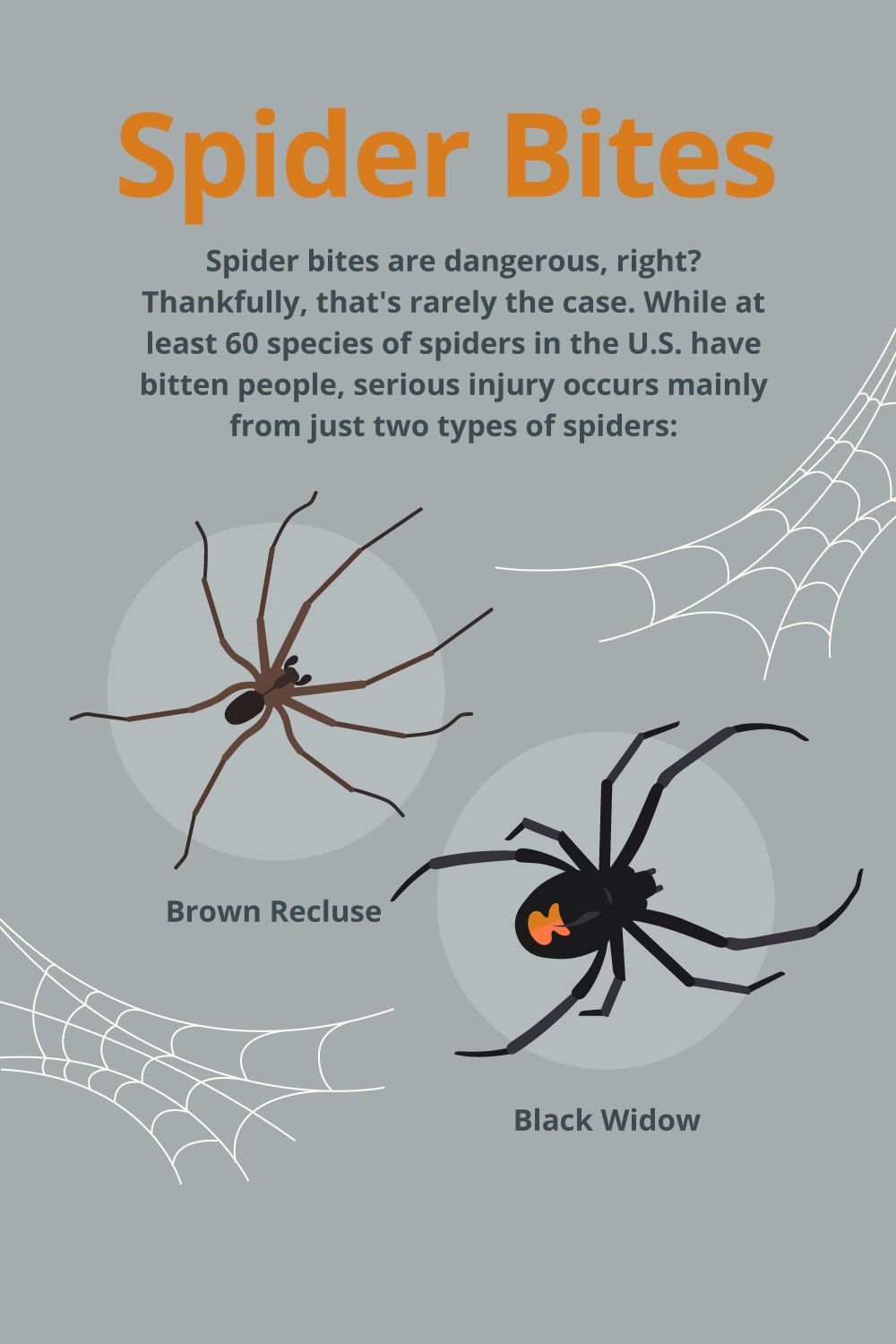 You may notice two puncture marks on the skin. In some cases, there will be a reaction either at once or after some hours, but it depends on the type of spider.
You may notice two puncture marks on the skin. In some cases, there will be a reaction either at once or after some hours, but it depends on the type of spider.
A bite from a wolf spider, for example, can tear the skin and cause pain, redness, and swelling. The bite of a jumping spider may cause pain similar to a wasp sting, and people with an allergy can have a reaction.
How do you tell if you were bitten by a venomous spider?
Symptoms vary widely and depend on the type of spider but include:
- itching, pain, and a rash
- muscle pain or cramps
- sweating, fever, and chills
- breathing problems
- anxiety
- high blood pressure
You may not notice a bite from a brown recluse spider at once, for example, but pain and itching may occur after some hours. A bite from a black widow spider may feel like a pinprick at the time, but puncture marks will be visible, and other symptoms will likely follow, such as muscle cramps and a fever.
How long after a spider bite do symptoms occur?
It will depend on the spider. Some spider bites cause an immediate reaction. Others are painless at the time, while others cause immediate pain and swelling. Symptoms of some venomous spider bites may not appear for several hours. A reaction from a brown recluse spider bite may develop after 2 to 8 hours. Cramping and other symptoms of a black widow spider bite usually start within an hour. A tarantula bite may be painless, but symptoms can appear several hours or days later.
What can be mistaken for a spider bite?
Spider bites often look like other bug bites, but sometimes two puncture marks will be visible. Further reactions can occur, such as swelling, pain, fever, and other symptoms, depending on the spider.
Why is it bad to squeeze a spider bite?
Squeezing a spider bite will not help reduce the risk of symptoms but may spread the venom or any infection further. Instead, wash the area with soap and water and keep it raised, if possible. Apply a damp cloth to reduce swelling, and seek medical attention as soon as possible.
Apply a damp cloth to reduce swelling, and seek medical attention as soon as possible.
Most types of spiders in the U.S. will not bite a human. Their mouths are too small, and their fangs are not strong enough to pierce the skin. Some do bite, but their toxin is not strong enough to cause a serious reaction in humans.
However, the bite of a few spiders — such as the black widow and the tarantula — can cause serious harm to humans. Anyone with a severe reaction to a spider bite should seek immediate medical help.
Identify What Bit You and Get Proper Help
When a spider bites, it may leave two marks on the skin. Some spider bites can produce severe symptoms, but very few are life threatening, and most spiders cannot bite humans.
In this article, find out how to recognize the symptoms of different spider bites and learn about some spiders that can bite humans.
There are over 3,500 spiders in the United States, but most are not dangerous. Only two species raise significant medical concerns: the widow and the recluse.
Most spiders bite, but their fangs are too small or weak to puncture human skin. Many spiders have weak or prey-specific toxins that are unlikely to affect humans. If they do bite, they may leave itchy, red wounds that heal within a week or so.
However, some spiders can bite through human skin and insert powerful toxins. Bites by these spiders are rarely fatal but can cause health complications, such as tissue death and painful muscle spasms.
Read on to learn:
- what spider bites look like
- what spider varieties leave certain bites
- how to treat spider bites
Identifying a spider bite is easier if you saw the spider that bit you, but you may not notice the wound until hours later.
Look for things like:
- swelling
- a red welt
- skin damage
- any troubling symptoms that accompany the bite
Other possible symptoms that may accompany a spider bite include:
- itching or rash
- pain around the area of the bite
- muscle pain or cramping
- a red or purplish blister
- sweating
- difficulty breathing
- headache
- nausea and vomiting
- fever
- chills
- anxiety or restlessness
- rashes
- swollen lymph glands
- high blood pressure
Spider bites can take longer to heal than other insect bites and may affect skin tissues. Keeping the bite clean can reduce the risk of infection.
Keeping the bite clean can reduce the risk of infection.
In some cases, you can treat spider bites at home. For nonvenomous spider bites, follow these steps:
- Apply an ice pack on and off the bite for 10 minutes at a time. Always wrap ice or an ice pack in a cloth.
- Elevate the area to reduce swelling.
- Take an antihistamine, such as diphenhydramine (Benadryl), to help with itching.
- Clean the area with soap and water to prevent infection.
- Apply antibiotic ointment to the area if blisters develop.
Seek medical attention if you’re showing symptoms of a spider bite or if the symptoms don’t go away over time.
Always seek medical attention if you suspect one of the following species has bitten you:
- brown recluse
- black widow
- hobo spider
- tarantula
- Brazilian wandering spider
Learn where these spiders hide and what they look like below.
Share on Pinterest
The brown recluse belongs to the Loxosceles or recluse family of spiders. Brown spiders, like the brown recluse, have a body around one-third of an inch long.
Brown spiders, like the brown recluse, have a body around one-third of an inch long.
Brown recluse spiders are not usually aggressive but will bite if trapped against a person’s skin. They typically hide in dark, secluded spaces. It’s also called the violin spider because of the dark marking on its back.
The brown recluse is usually found in areas such as:
- Missouri
- Tennessee
- Kansas
- Arkansas
- Louisiana
- Oklahoma
- Eastern Texas
The initial brown recluse bite may be painless, but within 2–8 hours, it’ll begin to itch, hurt, and turn red. A red or purple ring resembling a target or bull’s-eye will develop around the bite.
The bite can blister and grow progressively worse without treatment to the point where it may kill surrounding tissue and cause fever, chills, and headache.
On rare occasions, it can cause:
- coma or seizures
- jaundice
- blood in urine
- kidney failure
There’s no antidote for a brown recluse bite, but keeping the area clean can encourage faster healing.
Your doctor will examine the bite and prescribe antibiotics. People who experience tissue death may need surgery and time in the hospital.
How do you treat a brown recluse spider bite?
Share on PinterestImage credit: spotwin/Istock
The black widow spider is of the Latrodectus (widow) family of spiders. It is shiny and black with a distinct, reddish, hourglass-shaped mark on its belly. The body is around half an inch long.
Found mostly in the warm Southern and Western United States, the black widow stays in secluded spaces such as:
- piles of fallen leaves
- woodpiles
- boxes in the attic
Only the female black widow is toxic. Black widow bites can feel like a small pinprick or nothing at all, but your skin’s reaction will be immediate. You’ll be able to see the two puncture marks on your skin.
Within an hour, you may start to notice:
- muscle cramping
- pain and burning at the puncture site
- headache
- high blood pressure
- increased saliva and sweating
- nausea and vomiting
- numbness
- restlessness
Prompt treatment is essential, especially in children and older adults. A doctor may prescribe an antivenom.
A doctor may prescribe an antivenom.
What happens if a black widow spider bites you?
Share on Pinterest
Hobo spiders are common in the Pacific Northwest. Their body measures around half to three-quarters of an inch long. They sit up high on long legs and run fast.
Hobo spiders can bite when provoked.
Take care when cleaning:
- behind furniture
- under baseboards
- in closets
You may not notice a bite from a hobo spider at first, but it’ll cause pain and numbness within 15 minutes.
After 1 hour, the site will start to turn red. In 8 hours, it’ll become hardened and swollen. After 24 to 26 hours, the wound may discharge fluids and eventually turn black.
Other signs and symptoms may include:
- a red or purple blister at the puncture site
- visual or aural disruption
- weakness
- joint pain
- headaches
- nausea
- sweating
Hobo spider bites are slow to heal. Seek immediate medical treatment if you suspect a hobo spider has bitten you.
Seek immediate medical treatment if you suspect a hobo spider has bitten you.
The treatment is similar to that of brown recluse spider bites. It may involve:
- corticosteroids
- antibiotics
- surgery
Treatment works best if administered within 24 hours of the bite.
What else should you know about a hobo spider bite?
Share on Pinterest
Tarantulas occur in southwestern states with desert climates and as far east as the Mississippi River. They tend to hide under:
- logs or stones
- tree trunks
- in tunnels or burrows
Most tarantula bites in the United States are from pet tarantulas.
You can usually identify tarantulas by their appearance.
They have:
- a body one-and-a-half to two inches long
- a hairy texture
- visible fangs that hang down
Tarantulas aren’t aggressive. The venom from the species found in the United States isn’t considered dangerous. Their bite may be painless or feel like a bee sting. The area will become warm and red.
Their bite may be painless or feel like a bee sting. The area will become warm and red.
Other potential symptoms can appear several hours or even days later and include:
- rash
- swelling
- itching
- rapid heart rate
- eyelid puffiness
- trouble breathing
- low blood pressure
Seek medical attention immediately if you experience any of these symptoms.
Share on Pinterest
The Brazilian wandering spider is native to Central and South America. It moves quickly and aggressively. The body of a wandering spider is around one-quarter to one-and-a-quarter inches long. It’s considered one of the most venomous spiders in the world.
The bite of a Brazilian wandering spider is extremely painful. It can quickly result in heavy sweating and drooling. The skin around the bite will usually swell, turn red, and get hot.
In severe cases, the bite can result in dead tissue or death.
Seek emergency treatment immediately. Antivenom is available for this spider’s bite.
Antivenom is available for this spider’s bite.
Share on Pinterest
Common all over the country, wolf spiders have a body length of one-quarter to one-and-a-third inches and look similar to tarantulas. They like to stalk their prey by hunting on the ground.
You’ll find them:
- in sand and gravel
- around the bases of doors and windows
- in house plants
Look for two large eyes in the middle of their faces, accompanied by six smaller eyes.
A wolf spider’s bite may tear the skin and cause pain, redness, and swelling. You may also experience swollen lymph nodes as a result of the bite.
For some people, healing can take up to 10 days. In rare cases, the bite can lead to tissue damage.
What do you need to know about a wolf spider bite?
Share on Pinterest
One of the most common household spiders, the jumping spider exists throughout the United States. Around one-fifth to three-quarters of an inch long, it has a stout, hairy body.
The most common type is black with white spots on top. It moves erratically and actually jumps as a method of moving between locations. You’re likely to find it outside in gardens and near other vegetation.
The jumping spider’s bite is usually no worse than a wasp sting. It can be dangerous if you’re allergic to spider venom.
Serious symptoms include:
- pain
- itching
- redness
- swelling
- headaches
They’ll attack if threatened, so use gloves when gardening.
How do you treat a jumping spider bite?
Share on Pinterest
The sand-colored camel spider lives in desert climates and has a powerful pincer on its head. They occur in central and southern Mexico and the western United States.
A camel spider will always seek the coolest place around, which just may be your shadow. A fast runner (up to 10 mph), some can grow to over 2 inches long.
Because of its large jaws, a camel spider can leave a significant wound in human skin.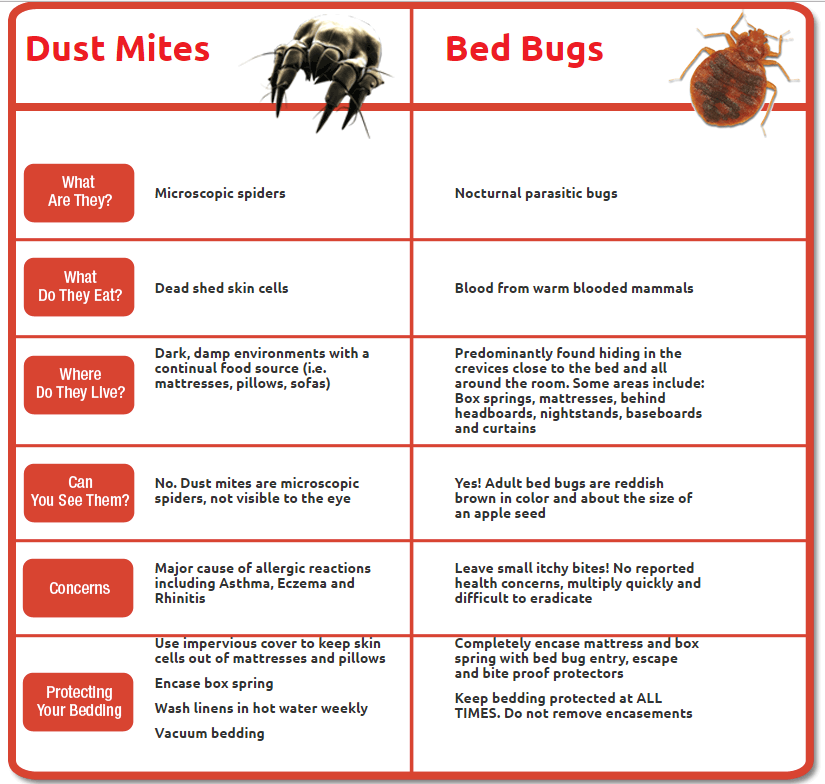 These spiders don’t produce venom, but you may get an infection due to the open wound.
These spiders don’t produce venom, but you may get an infection due to the open wound.
You may also experience swelling around the bite wound and mild to intense bleeding.
Always seek medical attention if you suspect you or someone else has symptoms of a spider bite.
Call 911 if the person has:
- an allergic reaction, including hives, swelling, and breathing difficulty
- shock or breathing problems, even if these do not appear to be an allergic reaction
- muscle cramps
- fever
- loss of consciousness
- severe or rapidly worsening pain, swelling, or other symptoms
If you see the spider, try to take a photo in case you need to show it to a doctor later for identification.
You may need a tetanus booster if you haven’t had one in the last 10 years.
For the best outcome, seek treatment for a spider bite within 24 hours of being bitten.
What can you do at home to ease the effect of a spider bite?
Spiders may be present in the home, in yards, outdoors, and in workplaces.
Here are some tips to reduce the risk of a spider bite:
- known how to identify venomous spiders in your local area
- take care when outdoors hiking or camping or at home working in the yard
- be vigilant when disturbing items or places that have not been disturbed for some time, such as a log pile or an attic
- inspect or shake out any clothing, shoes, boots, and equipment before use, especially if stored in sheds and outhouses
- wear protective clothing, with long sleeves, gloves, and so on, during yard work and on hikes
- keep the yard clear of debris, as far as possible
- ensure you have a tetanus booster every 10 years
How do you know if a spider bit you?
You will not always know if a spider has bitten you, although some bites cause pain, like a sting. You may notice two puncture marks on the skin. In some cases, there will be a reaction either at once or after some hours, but it depends on the type of spider.
A bite from a wolf spider, for example, can tear the skin and cause pain, redness, and swelling. The bite of a jumping spider may cause pain similar to a wasp sting, and people with an allergy can have a reaction.
How do you tell if you were bitten by a venomous spider?
Symptoms vary widely and depend on the type of spider but include:
- itching, pain, and a rash
- muscle pain or cramps
- sweating, fever, and chills
- breathing problems
- anxiety
- high blood pressure
You may not notice a bite from a brown recluse spider at once, for example, but pain and itching may occur after some hours. A bite from a black widow spider may feel like a pinprick at the time, but puncture marks will be visible, and other symptoms will likely follow, such as muscle cramps and a fever.
How long after a spider bite do symptoms occur?
It will depend on the spider. Some spider bites cause an immediate reaction. Others are painless at the time, while others cause immediate pain and swelling.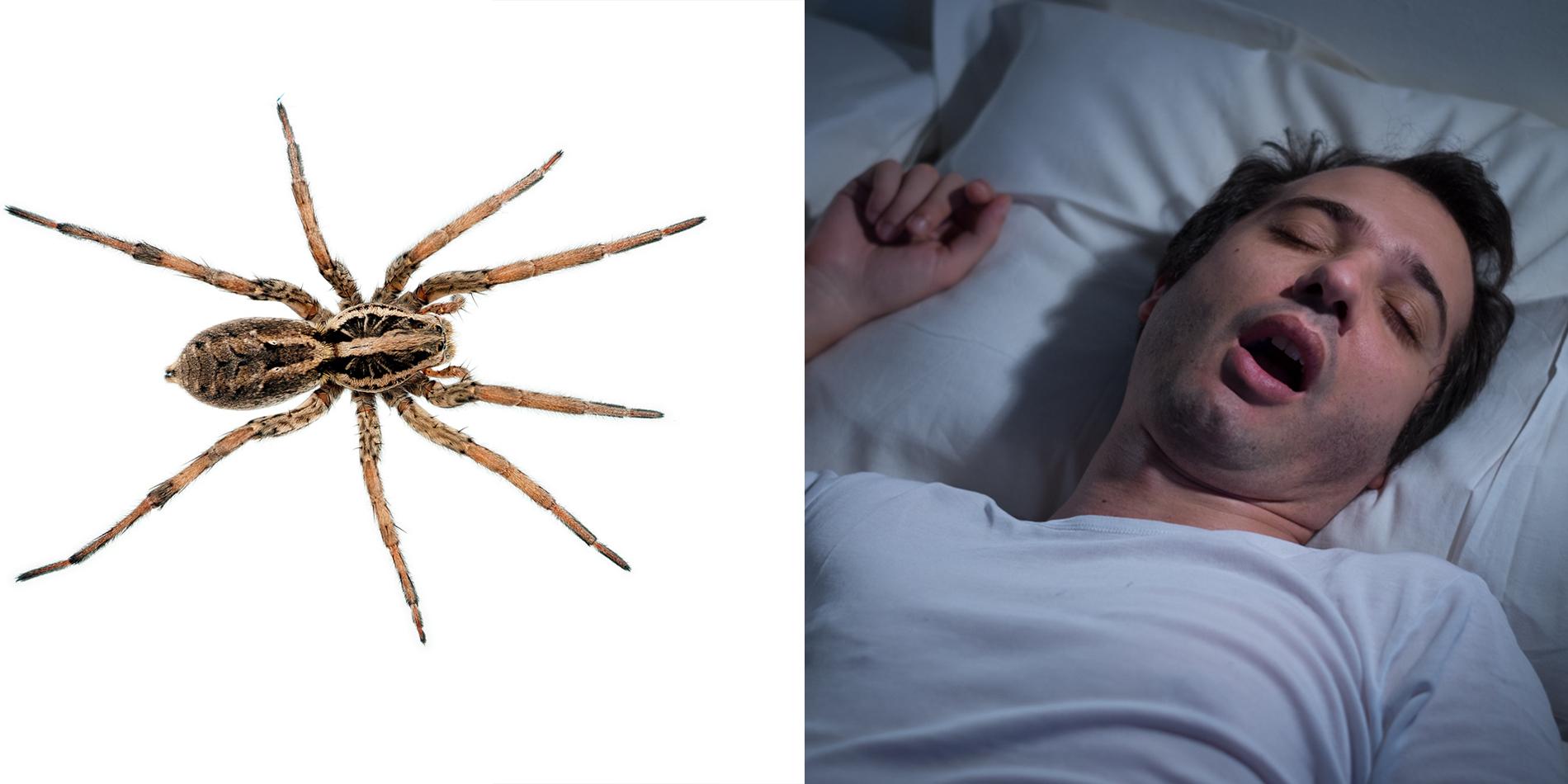 Symptoms of some venomous spider bites may not appear for several hours. A reaction from a brown recluse spider bite may develop after 2 to 8 hours. Cramping and other symptoms of a black widow spider bite usually start within an hour. A tarantula bite may be painless, but symptoms can appear several hours or days later.
Symptoms of some venomous spider bites may not appear for several hours. A reaction from a brown recluse spider bite may develop after 2 to 8 hours. Cramping and other symptoms of a black widow spider bite usually start within an hour. A tarantula bite may be painless, but symptoms can appear several hours or days later.
What can be mistaken for a spider bite?
Spider bites often look like other bug bites, but sometimes two puncture marks will be visible. Further reactions can occur, such as swelling, pain, fever, and other symptoms, depending on the spider.
Why is it bad to squeeze a spider bite?
Squeezing a spider bite will not help reduce the risk of symptoms but may spread the venom or any infection further. Instead, wash the area with soap and water and keep it raised, if possible. Apply a damp cloth to reduce swelling, and seek medical attention as soon as possible.
Most types of spiders in the U.S. will not bite a human. Their mouths are too small, and their fangs are not strong enough to pierce the skin. Some do bite, but their toxin is not strong enough to cause a serious reaction in humans.
Some do bite, but their toxin is not strong enough to cause a serious reaction in humans.
However, the bite of a few spiders — such as the black widow and the tarantula — can cause serious harm to humans. Anyone with a severe reaction to a spider bite should seek immediate medical help.
Bitten by a spider: procedure
What to do if bitten by a spider on a hike. First aid for a spider bite, which should be in the first aid kit. Features of bites of different types of spiders.
Before assisting with a spider bite, it is important to make sure that the victim is faced with an attack by a representative of arachnids. First aid for a spider bite depends on its type.
What not to do if bitten by a spider
- Apply a tourniquet to a limb that has been bitten by a spider. In the affected tissues, the metabolism is already disturbed. Squeezing will accelerate the process of intoxication of the body.
- Make incisions around the wound.
 This promotes infection.
This promotes infection. - Cauterize the bite, except if first aid is provided for the bite of the karakurt spider.
- Even briefly leave the victim alone.
Help with a spider bite: what should be in the first aid kit
If a person has been bitten by a spider, regardless of the type of arthropod, treatment of the wound with an antiseptic is required: alcohol, hydrogen peroxide or a non-concentrated solution of potassium permanganate.
If you don’t know what to do about a spider bite because you don’t know its name, take the antihistamine. The drug will help to avoid unpredictable consequences from an allergic reaction and must be present even in the minimum first-aid kit of a tourist. As an example:
- cetirizine;
- diazolin;
- suprastin.
If a non-venomous spider bite occurs, treatment may be limited to eliminating local inflammation with ointments:
- prednisolone;
- kremgen.

Spider bite symptoms
A spider bite can be distinguished from a harmless insect bite or scratch by the following symptoms:
- a white spot is formed at the injection site (a couple of centimeters in diameter) with a pink or red border;
- within 15 minutes after a person was bitten by a spider, the first symptoms appear, which rapidly increase:
– feeling of pain and aching in the muscles throughout the body;
– the victim sweats a lot, the face is red and swollen .
Spider bite first aid
What to do if you are bitten by a spider whose species is unknown? First, the bite site is washed with soapy water and treated with antiseptic agents. First aid for a spider bite is that the bitten limb is fixed to slow the spread of the poison.
Above the place that the spider has bitten, a tight bandage is applied. It should not interfere with blood flow.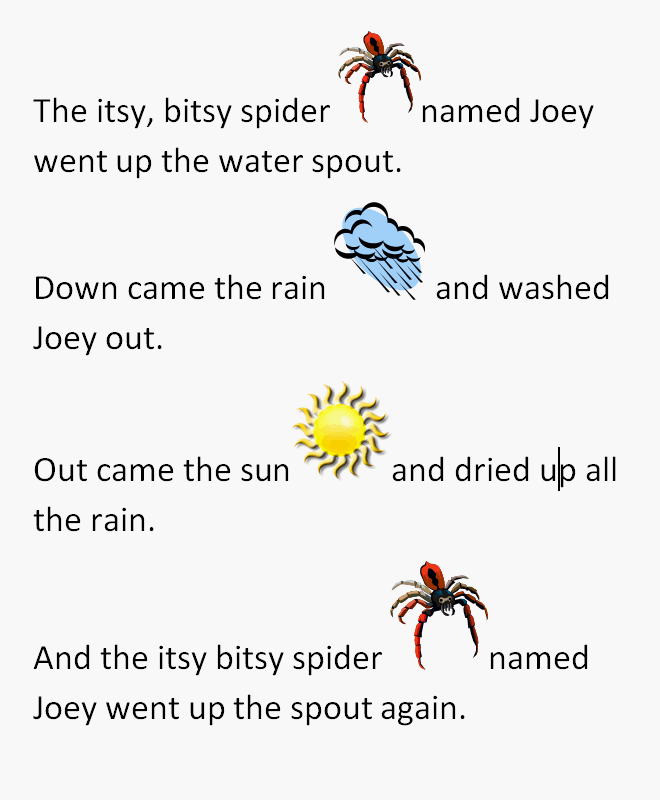 If possible, cold compress of ice, chilled bottle or metal is applied to the affected area.
If possible, cold compress of ice, chilled bottle or metal is applied to the affected area.
Mandatory assistance in case of a spider bite also includes active watering of the victim . A large amount of liquid contributes to the rapid removal of toxins. Antihistamines are given to avoid allergic shock .
Even if you are sure what to do if a spider bites, this does not detract from the possible risk to the life of the victim. First aid for a spider bite is aimed at inhibiting the intoxication of the body before the person is taken to the nearest medical center .
What to do in case of a spider bite depending on its type
The bite of the brown recluse spider is dangerous because it is not felt during the first hours. In the affected area, seals or one large tumor are formed, the skin is very itchy. If medical care is not provided in the first two days, then there is a rapid death of living tissues.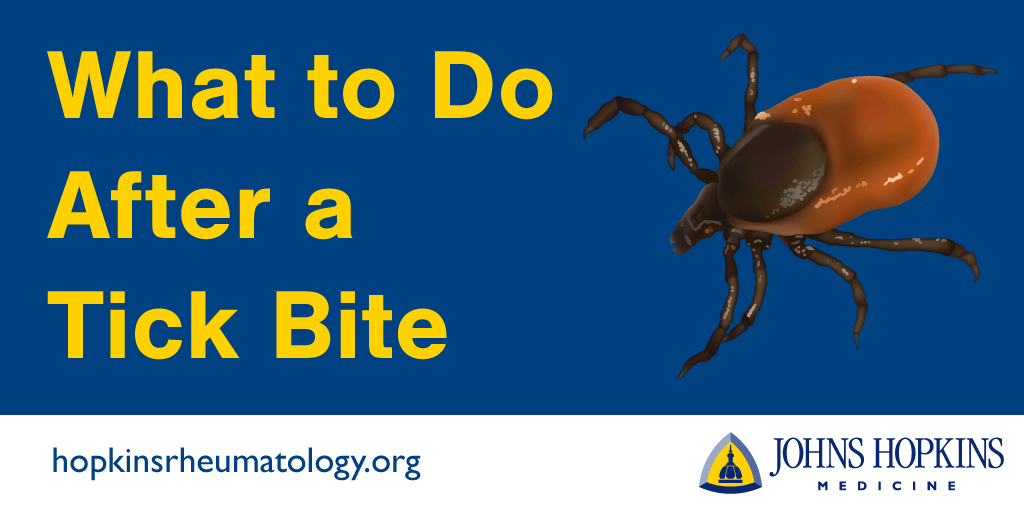
It is forbidden to expose the bite of a recluse spider to high temperatures or try to suck out the poison. First aid for a spider bite is provided according to the standard scheme. Any physical activity is contraindicated. If the situation allows, the bite site is placed above the level of the heart.
The bite of the yellow spider sack appears faster than in the case of the hermit. The injection site also needs to be cooled, if necessary, give the person pain medication and deliver it to a medical facility as soon as possible. The bite of a yellow spider is forbidden to be cut, trying to remove the poison on its own.
Despite the repulsive appearance that the arthropod has, the bite of the phalanx spider is not fatal to humans. The main thing is to quickly wash the wound and disinfect it. The affected area will be very sore, redness will occur. The phalanx spider bite is covered with a sterile bandage, which is changed every day.
What to do if bitten by a black widow spider
Attention! First aid for a bite of a karakurt spider is most effective in the first moments after the incident. If after a person was bitten by a spider, no more than two minutes, cauterization is in progress . If this time has been missed, this cannot be done.
Cauterization is done with the help of three matches, which are put together, set on fire and applied to the bite, or two matches are applied to the bite and the third is set on fire. Also, the bite can be burned with a cigarette. The protein structure of the poison, being under the skin, is destroyed by heat.
Knowing what to do when bitten by a karakurt spider is extremely important, since first aid in this case plays a decisive role in the struggle for human life. In small quantities, a hot drink is given, in the presence of severe pain, an anesthetic is injected (1 ml of diphenhydramine and 2 ml of analgin).
Bitten by a spider – what to do before the ambulance arrives
Contents:
- The effect of poison on the human body
- Symptoms
- Consequences and complications
- First aid for bites
- Treatment
These members of the arthropod order can attack adults and children both indoors and outdoors. The bites of many spiders will not cause significant harm to a person – a slight redness on the skin will disappear during the day. But after an attack by a karakurt or a hermit, a severe allergic reaction, swelling of the larynx and respiratory arrest can develop. It depends on the type of arthropod what to do if a spider has bitten, what first aid to give to a person. Even in the absence of symptoms, the victim should be quickly taken to the nearest hospital facility.
Effect of poison on the human body
The damage to human health depends on the qualitative and quantitative characteristics of the poison secreted by spiders during bites. The larger the specimen, the greater the danger it poses to humans. Small arthropods are often simply not able to bite through the skin or produce the amount of poison that can harm an adult or baby. But such a statement is true only for representatives of one species. Tarantulas are larger than karakurts, but their bites do not cause significant harm to humans. But after the attack of a hermit spider, a fatal outcome is quite possible. Depending on the action of toxic compounds, scientists distinguish two types of poison:
The larger the specimen, the greater the danger it poses to humans. Small arthropods are often simply not able to bite through the skin or produce the amount of poison that can harm an adult or baby. But such a statement is true only for representatives of one species. Tarantulas are larger than karakurts, but their bites do not cause significant harm to humans. But after the attack of a hermit spider, a fatal outcome is quite possible. Depending on the action of toxic compounds, scientists distinguish two types of poison:
- neurotoxic, affecting the central and peripheral nervous system;
- hemolytic, destroying erythrocytes after penetration into the bloodstream.
Karakurt and brown hermit spider are the most dangerous arthropod species for humans living in our country. And tourists and experienced travelers can become a victim of attacks by other arthropods in any corner of the planet.
Symptoms
The bites of many, even extremely dangerous spiders, are completely painless. A person takes a small swelling or redness on the skin for a scratch and does not take any action. And the symptoms of general intoxication of the body that developed within a few hours are very similar to the signs of any bacterial or viral infection. Such a clinical picture of jointed bites can mislead not only the victim, but also diagnosticians.
A person takes a small swelling or redness on the skin for a scratch and does not take any action. And the symptoms of general intoxication of the body that developed within a few hours are very similar to the signs of any bacterial or viral infection. Such a clinical picture of jointed bites can mislead not only the victim, but also diagnosticians.
This is interesting: Almost all spiders are predators. Having lured the victim with a shiny web, they inject a paralyzing poison into it. And when attacking a person, spiders use this method only to protect their own lives.
There are several indirect signs that help a person to distinguish a scratch or a small wound from a spider bite. After an arthropod attack, the following symptoms occur:
- the bite area gradually swells, and in some cases a pink or red erythema similar to a thin ring develops;
- after a few minutes or hours, pain in the limbs occurs, tremors or convulsions may appear;
- swelling of various localization develops: at the site of the bite, the upper half of the body or face;
- heartbeat quickens, lack of air is felt;
- blood pressure may increase and then decrease to life-threatening values.

If the victim has a predisposition to develop allergic reactions, large or small red spots form on the skin. They are very itchy and quickly spread throughout the body. Such symptoms of a spider bite can vary significantly depending on the species of the jointed.
Karakurt bite
The bite of a karakurt, or “black widow”, is very dangerous for humans. If medical assistance is not provided, it will most likely cause death. A person does not feel pain during a bite of a karakurt, which makes it difficult to determine the type of arthropod. The effect of the poison manifests itself within a few hours. In children or people with poor health, this period of time is significantly reduced. What symptoms occur after a bite of a karakurt:
- acute pain syndrome in damaged tissues after 1-3 hours, feeling of “goosebumps”, reddening of the upper layer of the epidermis;
- increased nervous excitability;
- profuse sweating;
- headaches;
- dizziness, inability to stay upright for a long time;
- arterial hypertension;
- excessive salivation;
- Painful spasms in the epigastric region.

The severity of symptoms is directly dependent on the resistance of the body of an adult or child to the action of the poison. Signs of intoxication persist for several days.
Warning: If the victim was not provided with qualified medical assistance, then for six months after the bite of the karakurt, he will suffer from convulsions and neurological disorders.
Tarantula bite
Many people are under the delusion that a tarantula bite is fatal. Undoubtedly, it can cause serious harm to human health, but a lethal outcome is extremely rare. The cause of death is not the poison of an arthropod, but an allergic reaction that has developed on its penetration into the body:
- anaphylactic shock;
- angioedema.
Fatal outcome in such cases occurs quickly if first aid is not provided to the victim or antidotes are not available. The bite of a tarantula causes severe pain. Within a few minutes, extensive swelling develops on the damaged area of the skin, numerous reddenings appear, resembling a rash. A person’s arms and legs begin to twitch, blood pressure drops, dizziness. A characteristic symptom of a tarantula bite is numbness of the limbs.
A person’s arms and legs begin to twitch, blood pressure drops, dizziness. A characteristic symptom of a tarantula bite is numbness of the limbs.
Bite of the hermit spider
Despite the fact that this species of arthropod is not large in size, its bite is deadly even for a strong healthy man. The hermit spider pierces the skin in such a way that a person does not experience the slightest discomfort. The poison enters the systemic circulation and gradually spreads throughout the body. What does a spider bite look like:
- the bite is swollen;
- the size of the swelling is rapidly increasing;
- large ulcers are formed.
If this area of the skin is not treated with antiseptic agents, then after a while the soft tissues begin to ulcerate and die. The clinical picture of intoxication is similar to the signs of a respiratory infection:
- aches in bones and joints;
- temperature rise;
- decrease in the functional activity of the cardiovascular system.

The work of the urinary organs is disrupted in the victim and the metabolism is significantly slowed down. The heart rate drops and breathing becomes difficult. If at this stage of intoxication a person was not provided with medical assistance, then he may die.
Cross Bite
The venom of this spider is hemolytic. After penetration into the bloodstream under the action of the toxin, red blood cells begin to break down. Since they are responsible for the transfer of molecular oxygen, its deficiency negatively affects the functioning of all human vital systems.
This is interesting: Cross-spiders are common in our country. They attack a person only for the purpose of protection, but they can do it in the most unexpected places, for example, in an apartment in a multi-storey building. The characteristic pattern on the body of an articulate helps to quickly determine its species, which speeds up the diagnosis and selection of an antidote.
Even a large adult crosshead can’t produce a lethal amount of venom. But the bite of a spider gives a person a lot of discomfort:
- aching joints, twitching of limbs;
- pain, burning, pruritus in the area of the bite;
- arterial hypotension, dizziness;
- weakness, apathy, fatigue.
If the victim has not been taken to the hospital for detoxification therapy, the poison will be excreted from the body along with feces and urine after 24 hours. Swelling and swelling at the site of the bite will persist for several days.
House spider bite
In our country, there are several dozen species of arthropods that live in private houses and apartments in multi-storey buildings, and all of them are quite harmless. It is difficult to imagine a situation when a domestic spider attacks a person. Such a bite, as a rule, does not cause serious harm to the victim. Pain that occurs when the skin is damaged is mild, does not require the use of any pharmacological preparations. A slight puffiness disappears without a trace after a couple of days.
A slight puffiness disappears without a trace after a couple of days.
Consequences and complications
The most serious consequences that develop after the bites of any variety of spiders include skin infections. The following pathologies are most often diagnosed:
- Arachnose. After a bite, necrosis of all layers of the epidermis rapidly develops. The inflammatory process also affects the subcutaneous tissue and adjacent soft tissues located near the damaged area. Necrosis occurs against the background of fever, joint and bone pain, arterial hypotension, heart failure and hemolysis. If medical assistance is not provided, the likelihood of death is high;
- Loxoscelism. An infectious lesion of the skin and subcutaneous tissue develops as a result of the bite of a brown recluse spider. Necrosis is rapidly progressing and is characterized by the formation of large ulcers that are difficult to treat. The course of the pathology is complicated by numerous symptoms of general intoxication of the body.

Physicians classify the effects of a spider bite on adults and children as follows:
- mild: flushing of the skin, slight pain, swelling, burning sensation and itching;
- moderate: drowsiness, fatigue, tremor of the limbs, indigestion and peristalsis, pain at the bite site for several days;
- severe: sharp pains spreading throughout the body, convulsions, dyspeptic disorders, urination disorders, a sharp decrease in blood pressure.
Severe intoxication with spider venom occurs in the absence of medical intervention. If medical assistance is provided on time, then the victim’s condition improves quickly.
Recommendation: A small child after a spider bite should be taken promptly to the nearest hospital facility for administration of an antidote. Due to the high permeability of blood vessels in children, the poison spreads very quickly in their body, affecting the cardiovascular and respiratory systems.
First aid for bites
When spiders bite adults or children, severe intoxication of the body develops, so you need to quickly provide first aid to the victim. If a person managed to see a jointed and determine its belonging to poisonous species, then medical intervention will be required. You should call the ambulance team, and only then try to alleviate the condition of the victim. The following measures will help prevent the spread of poison in the body:
- the area of the bite should be washed thoroughly under running cool water using laundry soap;
- if the limb is damaged, it should be immobilized to prevent the penetration of the poison into the subcutaneous tissue and healthy tissue areas;
- the bite site must be treated with solutions with antiseptic and antimicrobial activity – hydrogen peroxide, chlorhexidine bigluconate, iodine, brilliant green, ethyl alcohol, Miramistin, Furacilin;
- to localize the zone of distribution of toxins, you can pull the arm or leg (without disturbing blood circulation!) with an elastic bandage slightly above the bite area;
- Apply a cold compress in the form of pieces of ice wrapped in a dense cloth to the reddened area of the skin.

If there is a loss of consciousness, then help with a spider bite is to observe the victim until the ambulance arrives. It is necessary to turn the person on his side and make sure that he does not choke on vomit.
Advice: It is necessary to give the victim plenty of fluids to speed up the removal of the poison from the body. As a plentiful drink, you can use chamomile tea, clean water, a decoction of rose hips, fruit compotes and berry fruit drinks.
Under no circumstances should poison be squeezed out of the wound. So you can provoke the rapid spread of poison to neighboring healthy tissues. This will cause necrosis or the rapid formation of purulent ulcerations.
Treatment
If the victim complains of pain in the head or limbs, give him any painkillers that are in the home medicine cabinet. The following pharmacological preparations are most effective:
- analgesics and antispasmodics – Baralgin, Spazmalgon, Maksigan, Spazgan, Analgin;
- non-steroidal anti-inflammatory drugs – Nurofen, Nimesil, Nimesulide, Ibufen, Diclofenac;
- preparations with paracetamol – Panadol, Efferalgan.

Acetylsalicylic acid may only be given to a victim of a spider bite if other drugs are not available. Do not exceed the dosage recommended in the instructions for use in the hope of speeding up recovery. You can consult with the ambulance dispatcher about the advisability of using certain medications. He will answer all questions himself or contact the toxicologist on duty.
The victim should also be given any antihistamine from the following list:
- Zodak;
- Suprastin;
- Claritin;
- Tavegil;
- Cetrin;
- Diphenhydramine;
- Loratadine.
With a sharp rise in blood pressure, you can normalize the condition with antihypertensive drugs – Enap, Enalapril, Captopril, Indap, Indapamide. And when arterial hypotension appears, you need to drink a person with strong coffee, green or black sweet tea. The arriving doctor will examine the victim and, if necessary, hospitalize. In stationary conditions, detoxification therapy will be carried out using solutions for intravenous infusion.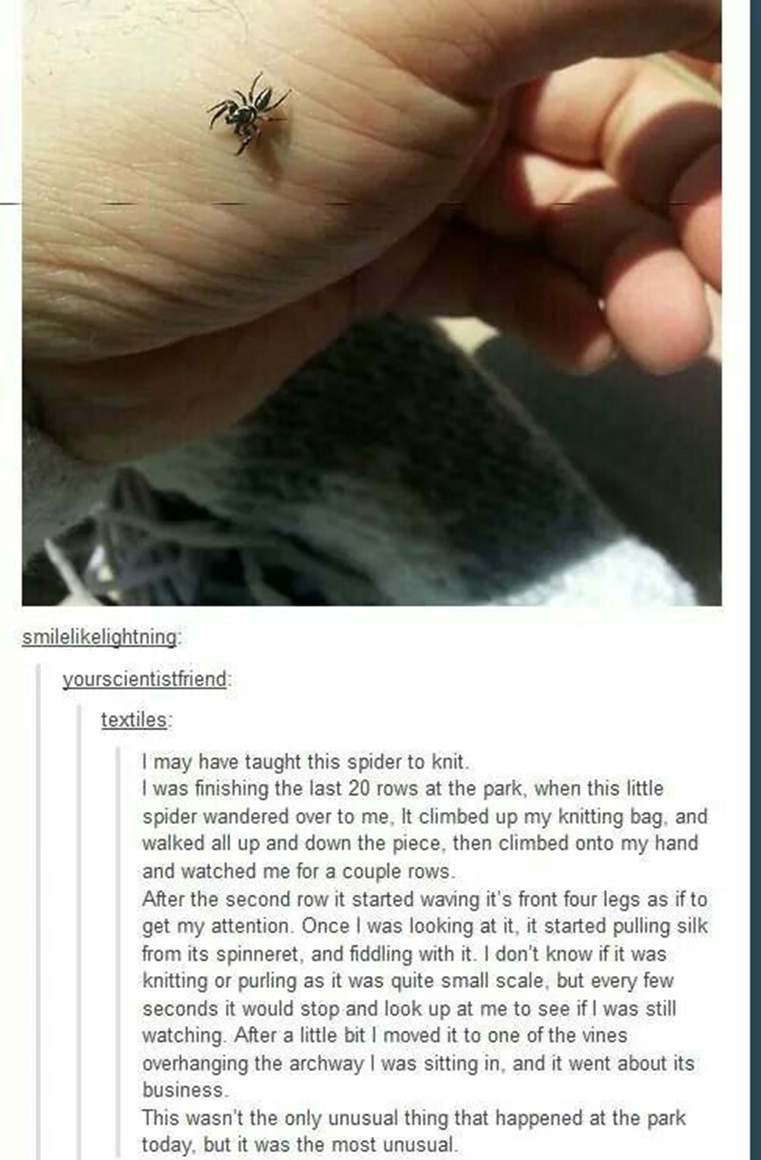

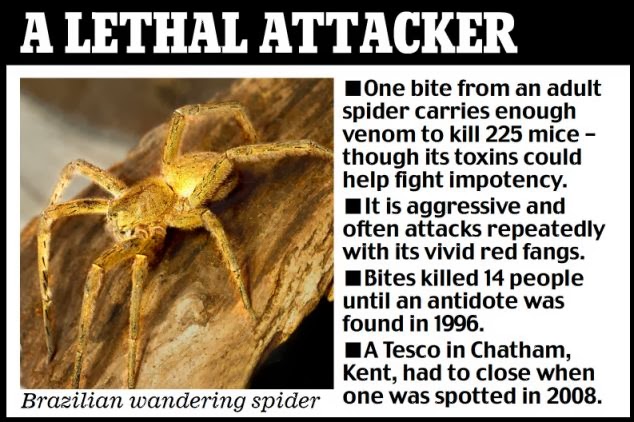
 This promotes infection.
This promotes infection.
